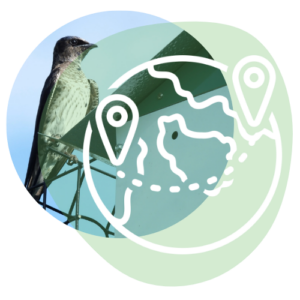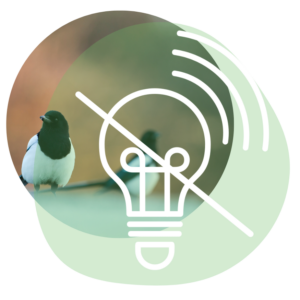
Light pollution is increasing globally, with an estimated 80% of the world’s population currently living under a “lit sky” – a figure closer to 99% in Europe and North America.
Reference: Falchi, F., et al. (2016) The new world atlas of artificial night sky brightness. Science Advances. 2(6): e1600377. doi: 10.1126/sciadv.1600377

Between 2012 and 2016, the global artificially lit outdoor area was estimated to have increased by 2.2% per year, there was a total radiance growth of 1.8% per year, with the brightness of continuously lit areas increasing by 2.2% per year.
Reference: Kyba, C.C.M., et al. (2017) Artificially lit surface of Earth at night increasing in radiance and extent. Science Advances 3(11): e1701528.

As well as being an issue on land, light pollution impacts the marine environment particularly those areas with intensive offshore development and coastal urbanization. An area of 1.9 million km2 of the world’s coastal seas are exposed to ALAN at a depth of 1m (equivalent to 3.1% of the global exclusive economic zones).
Reference: Smyth, T.J., et al. (2021) A global atlas of artificial light at night under the sea. Elementa: Science of the Anthropocene 9(1): 00049.

In their South American overwintering sites, purple martins (Progne subis) that experienced the highest number of nights with artificial light at night during the days prior to their spring migration, departed an average of 8 days earlier than those that experienced no artificial light. As a result, they also arrived 8 days earlier at their breeding sites. If birds arrive at their destinations too early, they could find that the necessary environmental conditions, such as food availability at the breeding site and on the migratory route, are not optimal and this could have a negative impact on survival and reproduction.
Reference: Smith, R.A. et al. (2021) Pre-migration artificial light at night advances the spring migration timing of a trans-hemispheric migratory songbird. Environmental Pollution. 269: 116136.

Pigeons (Columba livia) and Australian magpies (Cracticus tibicen tyrannica) slept less and had more fragmented sleep when they slept under urban intensities of light at night. For the pigeons, white and amber light had similar effects, whereas for the magpies their sleep was more disrupted by white than amber light. This shows that how artificial light affects sleep may be species specific.
Reference: Aulsebrook, A.E. et al. (2020) White and amber light at night disrupt sleep physiology in birds. Current Biology. 30: 1-7. 10.1016/j.cub.2020.06.085

Scientists studying the effects of the light beams of the National September 11 Memorial & Museum’s “Tribute in Light” in New York found that bird behavior was significantly affected up to altitudes of 4km. When the installation was illuminated, birds gathered in large numbers, slowed their flight speeds, started circling and called frequently. As soon as the lights were turned off, the birds’ behavior was no longer disrupted, showing the benefits of switching off lights when birds are migrating.
Videos of the birds circling in the light beams are available here.
Reference: Van Doren, B.M., et al. (2017) High-intensity urban light installation dramatically alters nocturnal bird migration. Proceedings of the National Academy of Sciences of the United States of America. 114(42): 11175-11180.

A citizen science study looking at how our view of the stars is impacted by light pollution found that the average night sky got brighter by over 9% each year from 2011 to 2022.